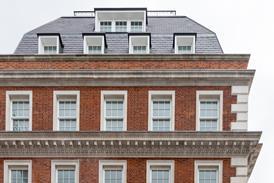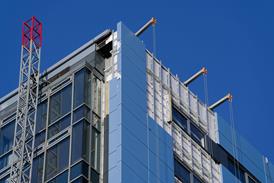One of our most pressing tasks is to convince architects, engineers, surveyors, contractors, planners and government agencies that brick is a sustainable material. This is necessary to maintain brick's position as a first-class cladding and structural material, but also to demolish a few misconceptions.
One of these is that brick has high embodied energy. It is frequently expressed, but how many specifiers are aware that clay brick-making accounts for only 1.5% of total energy consumption of UK manufacturing? What's more, the industry has pledged to reduce its specific energy consumption more than 10% by 2010, and it has spent £12.6m to improve its environmental performance.
Statistics such as these can help specifiers to reach an informed decision, but they must be considered in conjunction with the traditional qualities of brick. For example, its remarkable durability and lifespan are strong arguments in any debate on sustainability, and is complemented by the minimal maintenance that brickwork requires. And when you remember that brick often fulfils aesthetic, weatherproofing, structural, acoustic, fire and security roles, the case for it becomes even stronger.
To spearhead the campaign, the BDA has launched two brochures: Brick. Made for Generations, which introduces the environmental argument for brick, and A Sustainability Strategy for the Brick Industry, which presents a more detailed case (see www.brick.org.uk).
This campaign has resulted from the BDA's membership of the Pioneers Group – an initiative established by the DTI and the Department for the Environment, Food and Rural Affairs – to accelerate the development and implementation of sustainability strategies. This campaign demonstrates the determination of the brick industry to work on its strategy – one of the first business sectors to do so.
The ultimate aim of sustainable development must be to deliver a better quality of life to future generations. The government should be applauded for taking this responsibility seriously, partly by challenging the industry to evaluate and improve the sustainability of its activities.
How will this be achieved? Simply by each sector implementing four objectives:
- Social progress that recognises the needs of all
- The effective protection of the environment
- The prudent use of resources
- The maintenance of high and stable levels of economic growth and employment.
As one of the first construction sectors to publish its sustainability strategy, the brick industry can feel satisfied of progress on all four fronts.
The brick industry employs 6000 people, spread across 120 manufacturing sites. These are located mostly in rural areas and are often the main source of employment. The popularity of brick and the associated stability of demand will enable brickworks to offer long-term, stable employment to its workers.
Environmental protection naturally springs to mind when the subject of sustainable development is brought up. Although we are never going to face a clay shortage, brick makers nevertheless recognise the importance of measuring and reducing the consumption of natural resources. Heavy clay construction products make up less than 3% of the non-energy minerals extracted in the UK. The brick industry wastes very little clay in manufacture, has invested in kilns that use recycled heat, and brick makers use gas from landfill in exhausted pits to fire kilns or generate electricity sold to the national grid.
As with all manufacturing processes, there is more that can be done to improve sustainability, yet as far as brick is concerned, a flying start has been made.
Postscript
Con Lenan is chief executive of the Brick Development Association.
Brick Bulletin
- 1
- 2Currently reading
The message tied to a brick























No comments yet